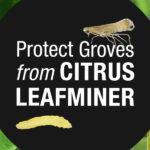A Closer Look: Conventional and Organic Ag
Knowing the key differences between conventional and organic agriculture can go a long way towards dispelling misinformation.

While still a relatively small agricultural sector, organic production has surged in recent years with sales of $9.9 billion in 2019, an increase of 31% in three years.1 Agricultural professionals generally agree that both conventional and organic agriculture have roles to play in meeting consumer and downstream market demands.
Today, many growers employ both agronomic practices on their farms. However, misinformation about farming practices runs rampant among the public. Knowing a few key facts about the differences between conventional and organic farming practices can go a long way toward helping people understand the importance of various agronomic practices.
The Big Picture
Despite its rapid growth, organic agriculture is a niche market within the broader U.S. farm economy.
- Total U.S. Farms: 2,025,635; Certified organic farms: 16,585.2
- Total U.S. Acres: 894,722,302; Certified organic acres: 5,495,274 (0.6% of all U.S. farmland).2
- Total U.S. Market value of agricultural products sold: $378,596,784,000; Total value of certified organic products sold: $9,925,911,000.2
Yields Differences
- 34% lower yields result from organic agriculture.3
- +100 million more acres would be needed for organic agriculture to grow the same amount of food currently produced by conventional agriculture.4
Costs Differences
- +7%–13% higher labor costs are required by organic agriculture.5
- 47% higher costs on average for consumers when they purchase organic products.6
Organic Farming’s Environmental Downsides
- 50%–70% more greenhouse gas emissions would be released if all agricultural production were converted to organic agriculture.7
- 37% higher potential for eutrophication and 13% greater risk of acidification with organic farming runoff, posing serious threats to aquatic life.8
- Copper Sulfate, a widely used pesticide in organic agriculture, is toxic to people, other mammals, fish, soil fauna, pollinators and other insects, and it can build up in the soil and cause harm to crops.9
Separating Fact From Fiction
- Modern pesticides have enabled U.S. growers to increase farm output by 300% on 10% less land since 1950, preserving 120 million acres for wilderness and land for other purposes.10
- Innovative, synthetic pesticides decrease yield losses and reduce the energy required to produce crops.11
- Genetically modified crops produce higher yields, bring down production costs and boost production efficiency.12
- Herbicide-enabled no-till farming can decrease soil erosion up to 98%.13 No-till farming practices also reduce cost and energy requirements.14
- Pesticide toxicity has declined 97% since the 1960s. Most pesticides today are less toxic than coffee.15
Cover image: Illustration by Andrew Lyons.
2 Min Read


















